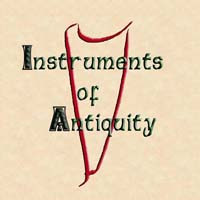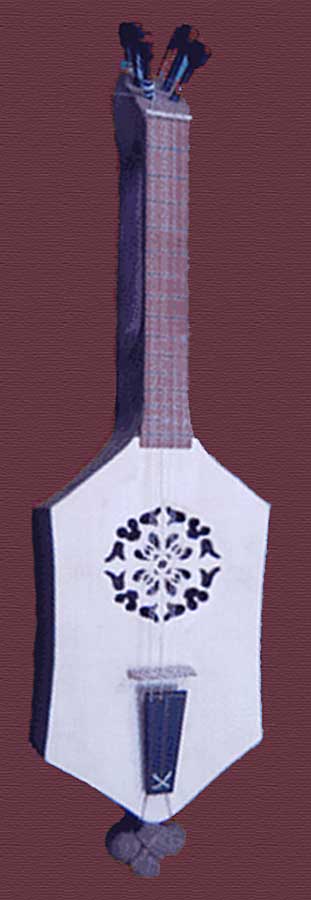
create for you?
(Links lead to detailed pages with larger photos and more information...)
Authentic:
Citole:
Cantigas style
Warwick style
Drums:
Bodhran
Gusli
Harps:
Bardic/Lap Harps:
Gut Strung
Celtic Wire Strung
Floor Harps:
Gothic
(more to come)
Kantele:
5 string
5 string Piccolo
9 string
Performance set
Lyres:
Trossingen
Sutton Hoo
Mosning Thorpe
Bergh Apton
Oberflacht
Cologne
Student Model
Bowed Lyres:
Crwth
Jouhikko
Psaltries:
Pig Nose
Cantigas style
Rebecs:
Soprano
Alto
Tenor
Bass
Zithers:
Fretted:
Epignette
Scheitholt
Fretless:
Myrna Hammered Dulcimer
Flutes
Whistles

The Guitar family is one of the longest
continuous instrument families
in existence. Many modern instrument families were designed
around
form and function of older instruments, but were not even close to
being mechanically the same instrument as their predecessors.
This is
well shown in the Viol family, which developed to replace the handheld
bowed Rebecs, but which are so technically dissimilar from their
predecessor as to be a completely seperate family.
The Guitar developed by small
steps, improvements through instruments
that have different names but are technically very similar. As
luthiers gained knowledge of controlling warping in longer necks, those
longer necks, and thus longer scale lengths and more possible notes to
play, became common. As rib-bending and built-up construction
replaced
hollowed out one piece soundboxes, the instrument evolved to make use
of these processes, but was not technically redesigned, just
updated.
While there were many smaller
branches in the Guitar family, the larger
branches were the Citole, the Cittern, the Gittern, and the
Guitar.
Even expert musical historians have troubles assigning the labels to
any given instrument, but many believe this lineage occurred in this
order. The citole had many stringing patterns and tunings, like
today's guitar. It was built with arched, carved, or flat tops,
like
today's guitar. It had single or double courses of strings.
There
were as many variants as their were situations to play in. Many
place
these instruments in the lute family, with the mandolin, but most of
these instruments were not the featherweight wire strung styles that
led to the modern mandolin, although comparing only by size it would be
tempting to place these instruments in with the Lute, Oud and Manodlin.
The
unique thumbslot neck was a common feature on many citoles with longer
necks, as this provided resistance to bending and warping but still
allowed the player to play on a thin and responsive neck and fretboard.
The Warwick Castle Citole is the single
remaining instrument of its time and type left for us to study,
although it does not exist as a citole anymore. The instrument
was originally built in the 14th century, but is was converted into a
carved top violin in the 16th century and presented by Queen Elizabeth
1 to the Earl of Leicester as a gift. The modifications cover
much of the original design and functional elements, but the one-piece
body and neck are largely intact. I designed this instrument
specifically for a mandolin player, and extended the neck by 50% so
that much of the repretoire could be played.
This compact instrument
accompanied many bards and troubadors as they
made their livelihood for hundreds of years in Western Europe. It
may
just be the key to discovering your inner minstrel. Contact us to
see
what we can create for you.
contact@instrumentsofantiquity.com
Phone: 479-283-6364
Please call between 9 AM and 7 PM U.S. Central Time (-6 GMT)
copyright (c) 2011